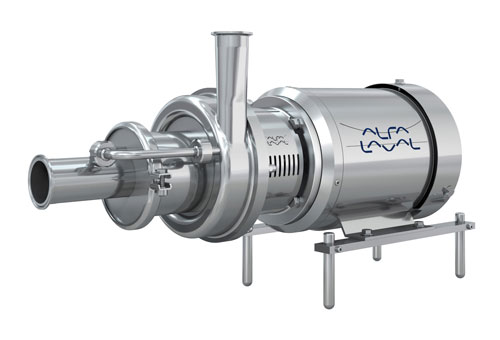A Guide to Choosing the Right Pump for Hygienic Applications eBook
This guide is intended for engineers, production managers, or anyone concerned with proper pump selection for pharmaceutical, biotechnology, and other ultra-clean applications.
Download PDF VersionChapter 2
Chapter 2
Pump Types
KINETIC PUMPS
Pumps of this type (also known as “dynamic” or “rotodynamic”) are designed to impart kinetic energy into the fluid to transfer it. They are characterized by the use of an impeller that spins at high speed to accelerate the fluid inside the pump casing. The energy imparted into the fluid by the impeller generates centrifugal force that creates pressure as the fluid pushes against the outer area of the casing. This pressure is the force that discharges the product out of the pump’s discharge port and through the process lines.
Centrifugal and self-priming pumps are two common types of kinetic pumps in high-purity processing
CENTRIFUGAL PUMPS

This style is by far the most common example of the kinetic pump design. In fact, the majority of all pumps currently being used in the processing industries are centrifugal. Their dependability, hygienic design, and relatively low cost make them a popular choice for many high-purity applications.
Centrifugal pumps are typically the go-to choice for transferring lower viscosity fluids. Since less viscous liquids are much easier to accelerate with kinetic energy, centrifugal pumps can transfer them much more efficiently than other designs. They are capable of very high flow rates with consistent, non-pulsing flow and are available in multi-stage versions for applications that require extremely high output pressures.
Not all products are a good fit for the centrifugal pump design. The high-speed impeller creates a very dynamic environment inside the pump casing, which may be harmful to some shear-sensitive fluids. And while some centrifugal pumps are capable of pumping fluids with viscosities as high as 1000 cPs, the efficiency of a centrifugal pump drops considerably once the fluid viscosity exceeds about 100 cPs.
SELF-PRIMING PUMPS

A self-priming kinetic pump usually plays a very specific role in processing applications. It is specially designed to pump fluids with entrained air or gases without losing its prime – something that a standard centrifugal pump has difficulty doing. This design feature makes the self-priming pump an excellent choice as a clean-in-place (CIP) return pump in high-purity processing applications.
Self-priming pumps made by most top-quality manufacturers are 3-A compliant with hygienic options such as casing drains and better surface finishes for internal surfaces. They may not be sufficiently hygienic for product contact in high-purity applications.

